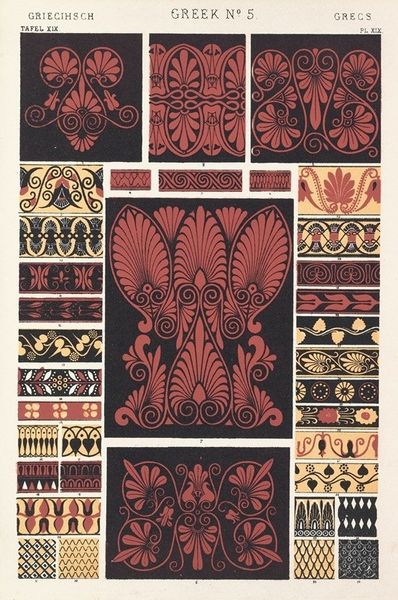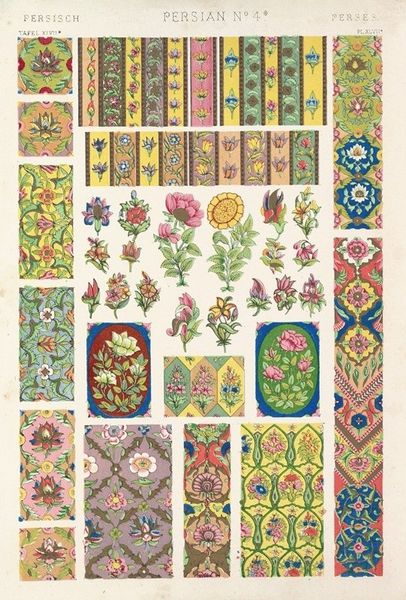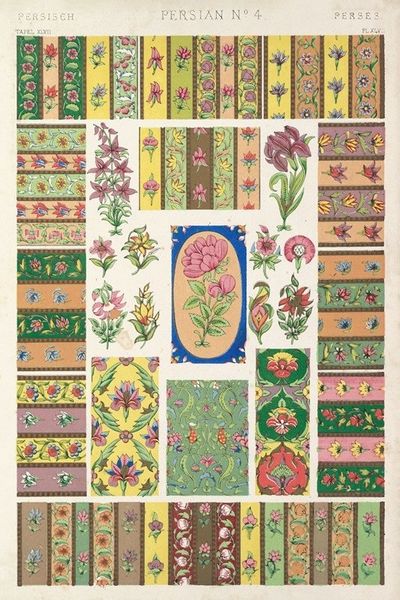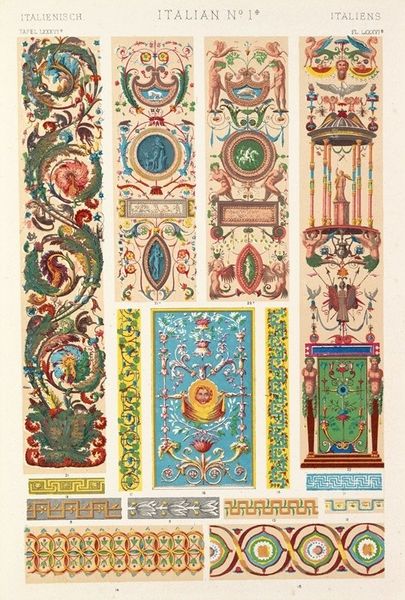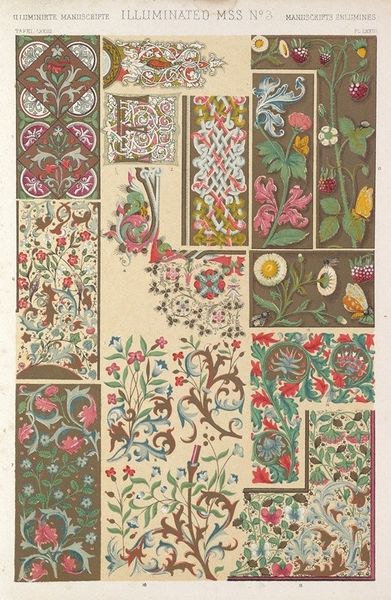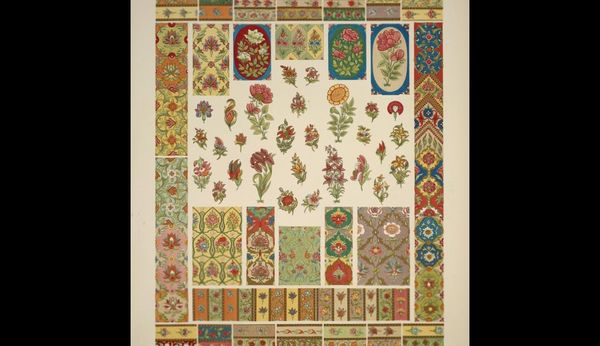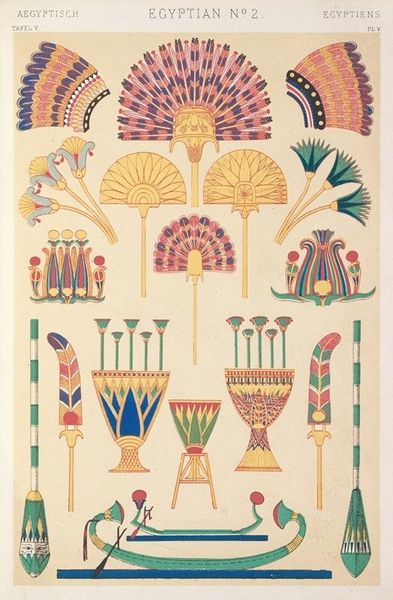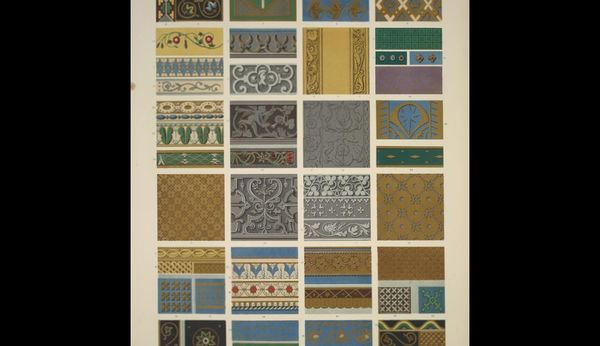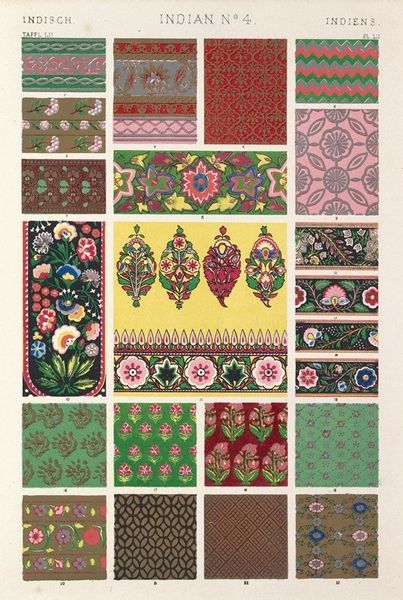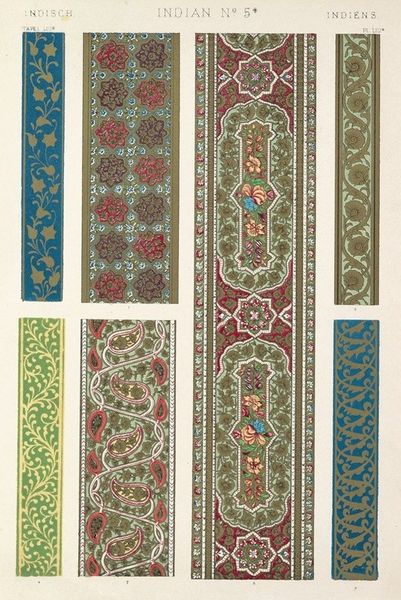
# print
#
organic pattern
#
geometric
#
decorative-art
Copyright: Public Domain: Artvee
Owen Jones created this chromolithograph, "Pompeian No. 2" at some point in the mid-19th century. These vibrant patterns, drawn from the remains of Pompeii, reflect a fascination with the classical world that gripped Europe during this period. Jones was a key figure in the design reform movement in Britain. A movement that sought to improve the quality and aesthetic value of manufactured goods by looking to historical precedents. Notice how he arranges these various motifs, employing bright colors and bold outlines in ways that feel very modern, even while referencing ancient designs. Jones published "The Grammar of Ornament" in 1856, a highly influential book outlining principles of design based on historical examples from various cultures. Studying Jones' work invites us to consider the role of design in shaping cultural values and national identities. His commitment to historical research and his belief in the power of design to elevate everyday life are well documented. These sources are essential to understanding his legacy and impact on the visual culture of the Victorian era and beyond.
Comments
No comments
Be the first to comment and join the conversation on the ultimate creative platform.

